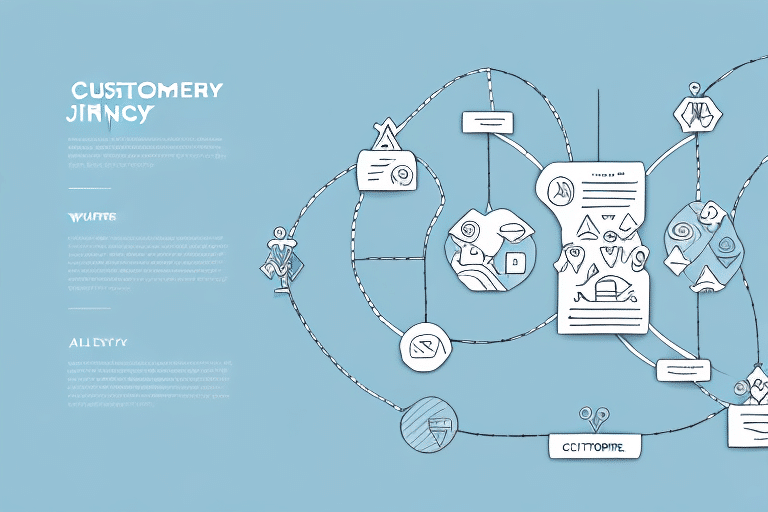Importance of Customer Retention for Business Success
Customer retention is the foundation of sustained business growth. According to the Harvard Business Review, increasing customer retention rates by just 5% can increase profits by 25% to 95%. Retaining existing customers is significantly more cost-effective compared to acquiring new ones, as it costs five times more to acquire a new customer than to retain an existing one. Loyal customers are more likely to recommend a business to others, spend more, and provide valuable feedback that enhances the overall customer experience.
Understanding and Enhancing the Customer Journey
Mapping Customer Touchpoints
A customer's journey encompasses all interactions with a business, from initial awareness to post-purchase advocacy. By mapping these touchpoints, businesses can identify pain points and streamline the customer experience. Understanding the various channels—such as social media, email, phone, and in-person interactions—allows companies to tailor their marketing and customer service efforts effectively.
Personalizing Customer Interactions
Personalization plays a critical role in enhancing the customer journey. Utilizing data analytics to understand customer preferences enables businesses to offer tailored recommendations and promotions. For instance, personalized email campaigns can significantly improve engagement rates; according to Campaign Monitor, segmented and targeted emails generate 58% of all revenue.
Leveraging Customer Feedback for Improvement
Collecting and Analyzing Feedback
Customer feedback is indispensable for identifying areas of improvement. Implementing surveys, feedback forms, and comment sections provides direct insights into customer satisfaction and pain points. Analyzing this feedback for recurring themes helps businesses prioritize changes that can reduce churn and enhance the customer experience.
Implementing Changes Based on Feedback
Acting on customer feedback fosters trust and shows customers that their opinions are valued. Addressing common complaints and making necessary adjustments can lead to higher satisfaction rates and increased loyalty.
Effective Communication and Engagement Strategies
Personalized Communication
Personalized communication involves tailoring messages to individual customer needs and preferences. According to a study by Epsilon, 80% of consumers are more likely to make a purchase when brands offer personalized experiences. This can be achieved through targeted email campaigns, personalized product recommendations, and customized offers based on purchase history.
Building Emotional Connections Through Storytelling
Storytelling helps businesses build emotional connections with customers. Sharing the brand's mission, values, and the people behind the scenes can differentiate a business from competitors and foster loyalty. Customers who feel emotionally connected to a brand are more likely to remain loyal and recommend the brand to others.
Implementing Loyalty Programs and Incentives
Designing Effective Loyalty Programs
A well-structured loyalty program can significantly boost retention rates. Programs should offer meaningful rewards that resonate with customers, such as exclusive discounts, early access to new products, or special promotions. Ease of redeeming rewards and clear communication about the program's benefits are crucial for maximizing participation.
Using Incentives to Encourage Repeat Business
Incentives like discounts, freebies, and exclusive offers encourage customers to return. Research by Invesp shows that increasing customer retention rates by 5% increases profits by 25% to 95%. Offering timely and relevant incentives can entice customers to make repeat purchases and deepen their relationship with the brand.
The Role of Exceptional Customer Service
Providing Prompt and Personalized Support
Exceptional customer service is pivotal in retaining customers. Providing timely, personalized support through various channels—such as phone, chat, and email—builds trust and satisfaction. According to American Express, customers are willing to spend 17% more on a company with excellent customer service.
Training Employees for Superior Service
Investing in employee training ensures that staff members are equipped to handle customer inquiries and issues effectively. Well-trained employees can enhance the customer experience, leading to higher satisfaction and retention rates.
Utilizing Data Analytics to Predict and Prevent Churn
Analyzing Customer Behavior Patterns
Data analytics allows businesses to monitor customer behavior and identify patterns that may indicate potential churn. By analyzing metrics such as purchase frequency, average order value, and interaction history, companies can proactively address issues and implement strategies to retain at-risk customers.
Developing Predictive Models
Predictive analytics models can forecast customer churn by assessing various factors like engagement levels, satisfaction scores, and purchasing trends. This enables businesses to take timely actions, such as targeted promotions or personalized outreach, to prevent churn.
Adapting to Changing Customer Expectations
Customer preferences and expectations are continually evolving. To maintain high retention rates, businesses must stay agile and adapt to these changes by updating their products, services, and customer engagement strategies. Keeping abreast of industry trends and soliciting regular feedback ensures that businesses meet and exceed customer expectations.
Measuring the Effectiveness of Retention Strategies
Evaluating the success of customer retention strategies involves tracking key metrics such as retention rates, customer lifetime value, and satisfaction scores. Tools like Net Promoter Score (NPS) and Customer Satisfaction (CSAT) surveys provide valuable insights into customer sentiment and the effectiveness of implemented strategies. Continuous measurement and analysis allow businesses to refine their approaches and achieve sustained growth through customer loyalty.




















